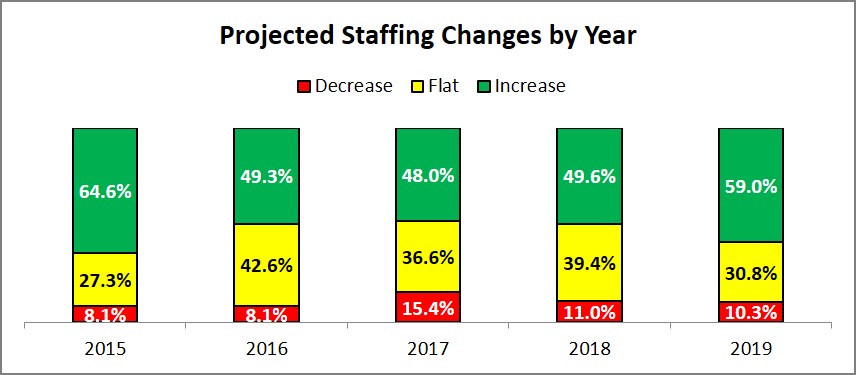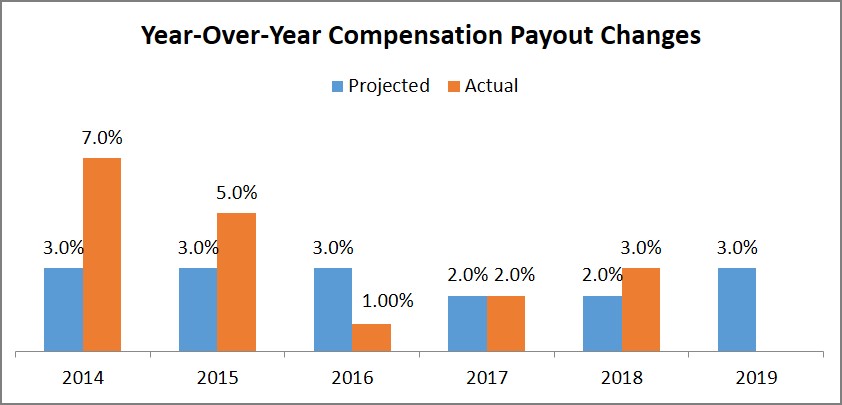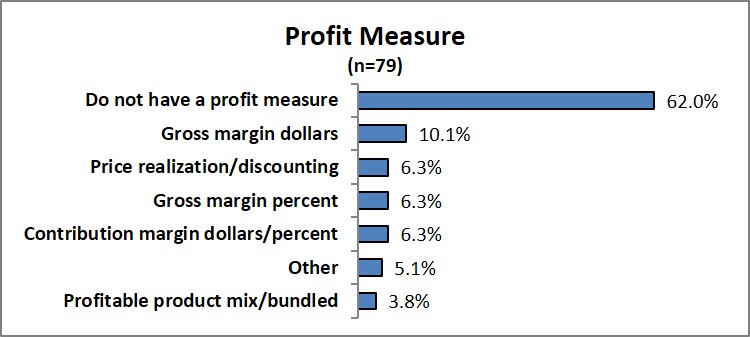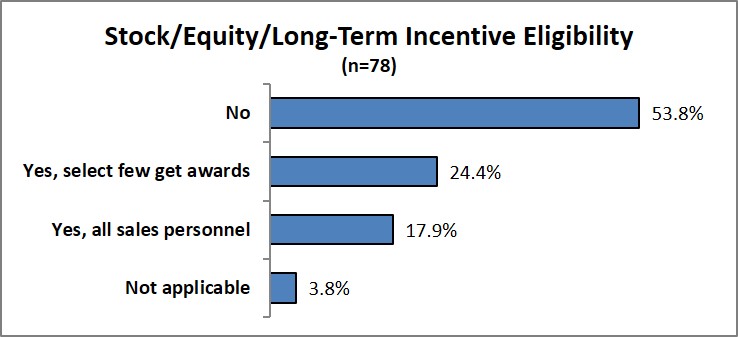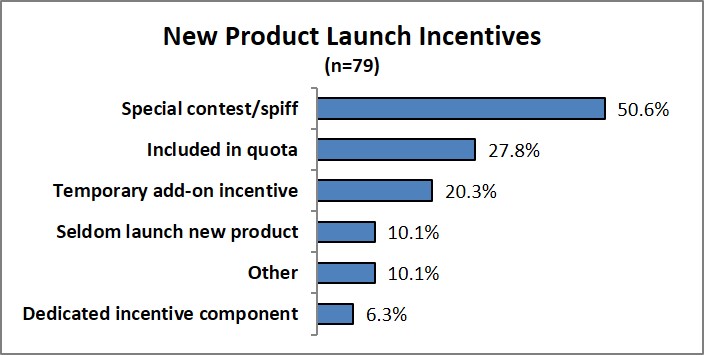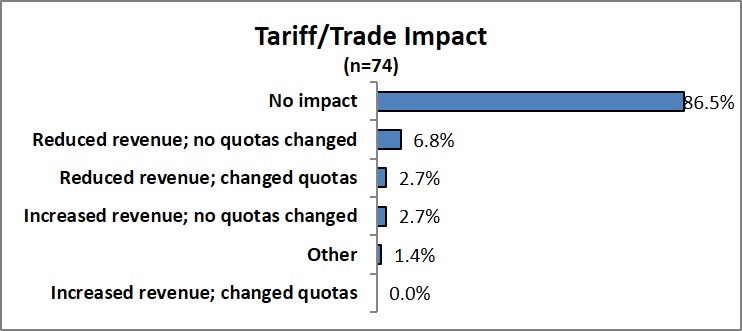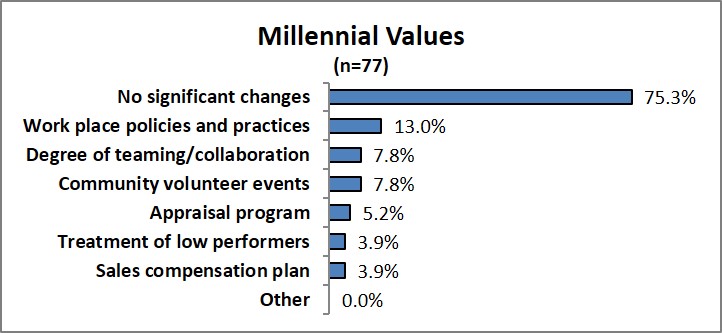Sales Compensation: 7 Trending Topics
The 2019 Sales Compensation Trends Survey© results are in.
The findings indicate the following seven sales compensation topics trending right now:
- Sales headcount for 2019
- Sales compensation budgets
- Paying for profitability
- Stock for salespeople
- New product launches
- Tariff/trade impact
- Saying “yes” to millennials
More than 80 sales departments provided information on recent sales compensation trends in the 17th annual edition of the Sales Compensation Trends Survey.
Sales Compensation: 7 Trending Topics
#1. Sales Headcount for 2019: Hiring on the Rise
Sales force hiring is going up in 2019. Last year saw a major increase in companies expanding their sales force headcount. This trend will continue in 2019. With the U.S. economy continuing to grow, sales leaders are adding sales headcount. However, neither turnover nor wage inflation has yet to increase as compared to recent years. Sales force turnover continues to hover at a 10 percent median rate. Consistent with past trends, 62 percent of the reporting companies reported 1 to 5 percent openings at any given time. 59 percent of the reporting companies project headcount to increase in 2019. This number is up from 49.6 percent expecting headcount increases at the beginning of 2018. The actual percent of companies increasing headcount in 2018 was 66.3 percent; suggesting the companies recalibrated their staffing needs during 2018 and decided to increase sales staff.
The following five-year chart of projected increases in headcount demonstrates the uptick in hiring expectations for 2019.
#2. Sales Compensation Budgets: Recent Historical Practices Continue
Companies are planning a conservative increase in sales compensation budgets in 2019. A median increase of 3 percent is the middle amount planned by the reporting companies. This amount is consistent with recent historical norms.
#3. Paying for Profitability: Not Widespread
Should companies pay sales personnel based on the profitability of their orders? In our study, 62 percent of the reporting companies do not include a profitability measure in the sales compensation program. Examples of profit measures include gross margin dollars/percent, contribution margin dollars/percent, price realization, average sales price improvement and product mix configuration. Our experience suggests companies are successfully employing profit measures that meet these two criteria: 1) low market growth requiring a shift from high growth (often encouraging discounting) to optimize profitable selling and 2) sales personnel influencing profit outcomes.
#4. Stock for Salespeople: Practices Vary
The study found 53.8 percent of the companies do not provide stock awards to sales personnel. When recruiting sales personnel, often in the tech sector, some sellers are eager to receive pre- or post-IPO shares. These stock shares have the potential for substantial capital wealth for the stockholders. However, in such cases, management provides more modest incentive earnings because cash is scarce and stock dilution is offset by rising valuations.
Of the 42 percent providing stock to sales personnel, the awards are more modest than the potential bonanza payout stock awarded by start-ups. The median value of all stock awards per salesperson is $9,125.00
Value of Stock Award Holdings
#5. New Product Launches: Use a Contest
More than 50 percent of the reporting companies provide a contest to help launch new products. Using contests helps management gain the attention of sales personnel to support a new product campaign by offering additional rewards.
#6. Tariff/Trade Impact: No Impact Evidence
While currently in the news, the survey respondents reported (as of December of 2018) tariff/trade disputes have not impacted their sales compensation programs.
#7. Saying “Yes” to Millennials: Not in Mature Companies
Most of the survey respondents have mature/seasoned workforces. They show little evidence of making special accommodations for recent millennial hires. We speculate that employment practices may be more non-traditional among companies where the demographics reflect a younger workforce.
A few participants noted some new practices to accommodate their millennial employees: more frequent information updates and feedback; incentive contests; more team-based selling; higher fixed base pay; more hedonistic awards/“experiences” versus cash; student loan repayments; and more structure and processes to avoid miscommunication and improve individual accountability.
Reprinted with permission from World@Work
